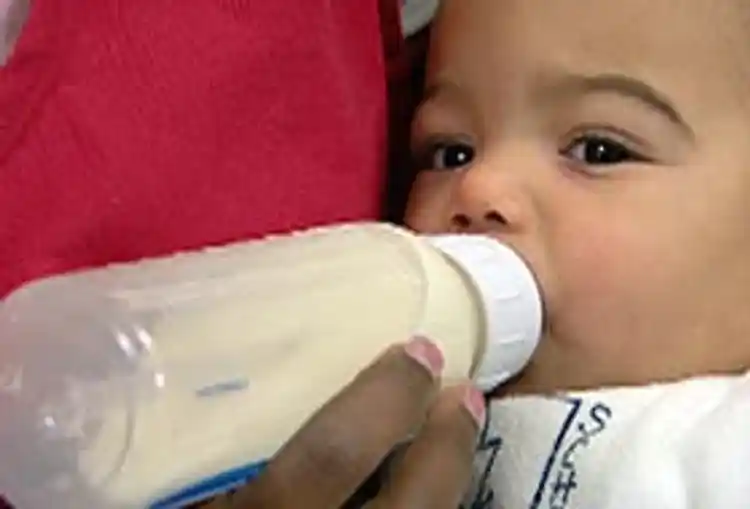Baby Bottle and Formula Problems

Hide Video Transcript
Video Transcript
Narrator
Introducing a bottle can be a trying time for many parents. Let us help you over some common hurdles – step by step. Are you adding a bottle to supplement breastfeeding? Avoid nipple confusion or breast rejection by waiting until your milk supply is stable and your baby is well adjusted to the breast. How much breast milk or formula should you prepare? As a newborn, expect your baby to take as little as a half ounce up to an ounce and a half at a time. As they begin to grow, fill 'er up – most infants drink between 6 to 8 ounces a bottle by six months of age. Is baby getting enough? Formula-fed babies feed frequently – though not as often as those who are drinking breast milk. The best way to gauge whether baby is feeding enough – follow weight gain. It should be steady and on target to your pediatrician's recommendations. As the old saying goes
what goes in must come out. So when baby is feeding normally, diapers will show regular signs of pee and poop. But don't be shocked if the poop changes color – and develops a disturbing odor – when you begin formula – it's a normal reaction! But if you are not seeing wet or dirty diapers – or your baby skips or refuses two or more feedings – call your pediatrician without delay. Mom
You're having a fit – what's the matter? Narrator
Baby doesn't seem to be taking to the bottle? Don't fret – troubleshoot. Be sure the nipple of the bottle is placed over baby's tongue, not under. It's easy to make that mistake because infant's tongues lift when they cry; experiment with nipples. If a nipple is too long, too short, too slow or too fast for baby's age or stage, feeding problems can occur. Check for air bubbles flowing into the bottle. If they're missing, check the tightness of the nipple ring. If it's screwed on too tight, negative pressure builds and baby has to suck harder to feed and can tire prematurely.Try an orthodontic nipple – they have an extra hole to avoid this issue. Hold baby and bottle correctly. Don't tilt baby's head too far back or forward-and be sure to fill the bottle neck and nipple with milk while pointing it to the back of the mouth – not too high or low. Mom
pat pat pat Narrator
Is baby not burping? Don't worry – some babies never do. Others like to finish the entire bottle first. Start by trying to burping baby once or twice during the feeding and see how it goes. Baby
There you go…yeah! Narrator
Is baby fussy, gassy or spitting up? Pediatricians agree it's not wise to change formulas immediately – the behavior could be age related – such as teething – and have nothing to do with the bottle. Mom
Let's try our other method. Narrator
However, that guidance changes when symptoms appear extreme or prolonged. Some newborns can have significant reactions to formula – from gastro distress to allergic skin rashes – and about 10 percent are truly intolerant. Doctor
Let's turn you over here. Narrator
Your doctor can run a test on baby's stool to determine the best course of action. In some cases a specialized formula that is easier on tummies could be recommended. And finally, just relax. For the most part, feeding time should be a comfortable and enjoyable opportunity for you and baby to bond. If you stay calm and content – your little one will take your cue, step by step. For WebMD, I'm Dr. Kim Manning. 
